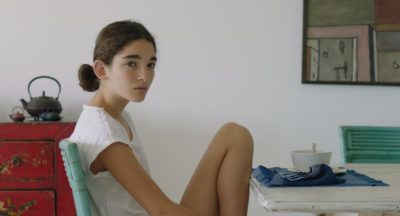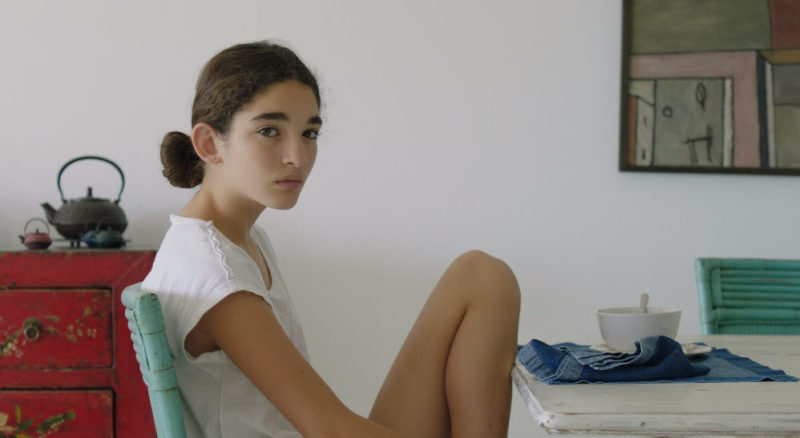INTERVIEW: Gastón Solnicki’s film blends documentary techniques with fictional premise

There’s a strong argument to be made that films coming from South America are leading the way on the indie front. These movies, often experimental in nature, marry brave cinematic techniques with stirring storylines to create wholly original experiences that cannot be found amongst the output of other filmmakers.
Case in point: Kékszakállú, or Bluebeard, from director Gastón Solnicki, which is set to premiere Friday, July 21 in theaters. The film has been a long time coming, having been finished for years and now finally receiving a proper distribution.
Perhaps one of the reasons for the delay is because Solnicki’s 72-minute feature is unconventional and subtle, two words that are music to the ears of indie film lovers but maybe not to the general public.
The film tells the story of several women, ranging in age but mostly teenagers, who while away the time at a summer resort in Argentina. Their boredom with life and general dissatisfaction with their current place in society could stand as a metaphor for the economic woes of Argentina and how that reality clashes with the uneasiness of youth. One characteristic scene in the movie depicts a group of young people all sitting and looking at their phones.
The movie is partly inspired by Béla Bartók’s opera Bluebeard’s Castle, and one gets a feel for that inspiration by listening to the soundtrack of Solnicki’s film. “I was quite involved with this particular opera by Béla Bartók, the only opera by him,” the director said in a recent phone interview.
The filmmaker was coming off his previous film, Papirosen, which he described as a kind of Argentine Boyhood, shot in a similar fashion to that Richard Linklater film and tracking the story of his own family over 12 years. That personal project brought Solnicki’s cinematic interests to the fine line between documentaries and fictional films.
“I was somehow in transition between this edge of documentary and fiction, and trying to figure out what my next project would be,” he said. “In those years, I was at some point very, very involved with Bartók’s music and specifically with his opera, which I found had very rich layers that had to do with cinema. … So somehow I was really engaged with the idea of creating a film that will be inspired by these materials.”
Bartók did not offer a linear representation of his narrative, and Solnicki wanted that type of freedom as well. He simply want to “develop and continue the gesture” that Bartók began with his opera.
“So at the time, this was just a longing,” he said. “I had no clue how I could create any of this, so it actually took another two years when I finally connected the context of the opera and this very dark atmosphere of the opera and the music with the context of this summer resort called Punta del Este, where I spent most of my own summers of my childhood. And that’s how we began. It is fiction film. It is made without a script. It’s very spontaneous. Of course, I believe there is a narrative, even though it’s not the most conventional one.”
The juxtaposition of the pre-World War I music of the opera with scenes of the present day in summertime makes for an interesting cinematic consideration and conversation.
As Solnicki explored these themes and techniques, he employed the help of several nonprofessional actors, including some family members of his (the girl at the start of the film is Solnicki’s niece). Those who had training as actors were still quite young, so the majority of the ensemble were willing and excited to follow the director down this experimental road.
“It was very challenging since there was no script or characters,” he said. “In a way, I guess, if they would have been much more experienced, it would be more of a conflict because they were mostly longing to be involved and didn’t also have much experience in a way that makes it easier or possible for all of us. But indeed it was rather complex because also a lot of the situations were inspired by locations, such as the factories or the universities, many of which were very difficult to plan in advance. So it was all very improvised in a very intimate way, and really the narrative somehow began sort of happening as a consequence of the situations we were getting involved with. And they were all very courageous, the actors.”
He added: “A lot of the relationships in the film are real biological relationships. We thought to get involved with the families of these people and the places where they work and they live, and we somehow follow this path with a keen eye on the fictional potential.”
His ultimate goal was to create a compelling, conventional story. He does eventually focus on one character in the second half of Kékszakállú, but on his journey, he also allows for some nonlinear scenes and for the ensemble to take the spotlight.
“In that regard, I’m a big admirer of Robert Altman who teaches us that you cannot throw everything at the audience,” he said. “I’d rather try to give them some hints, so that you can then go into the lower depths of the cinematic potential that I built for you. … I was not trying to pretend to have an avant-garde or too experimental approach. I think personally this is the most interesting complexity in the film, that it’s quite narrative for an experimental film, but experimental for a conventional narrative.”
The audience members, he said, “kind of have to rethink what the film or cinema is doing for them. I think this is ultimately one of the interesting achievements of the film. … Even though the film kind of follows toward the second part a more linear progression with one character, it’s natural to say also that this is very much about this group of people.”
By John Soltes / Publisher / John@HollywoodSoapbox.com
Kékszakállú, directed by Gastón Solnicki, will open Friday, July 21 in theaters. Click here for more information.

